In sports, the best players in a given league aren't criticized for the shortcomings of their teammates or other players in the league. The best players produce the most, get the most credit and blame when things go right or wrong, make the most money, and earn the most attention.
In higher education, specifically in black college culture, the opposite is true. The struggles of weaker institutions brand the culture at large, brings added attention to the flaws of the strongest institutions and minimizes all HBCU successes.
So what if we were to break down HBCU culture, at least by four-year institutions, according to their space along the spectrum of mass appeal and recognition? Every HBCU offers its own research, learning advantage, alumni influence and cultural staple on its campus community and state. But if we're just breaking down HBCUs on how central they are individually to the discussion about black college culture, it's easy to see why HBCU culture is collectively painted in a less than favorable way.
Imagine if every HBCU could be described in sports terms; the best and most recognizable schools are all-stars, those schools on the cusp of being standard bearers for HBCU culture are starters, the schools that are emerging with quality leadership and offerings are role players, and those HBCUs that have almost no national recognition are free agents. Here's a list for discussion.
All-Stars
1. Florida A&M University
2. Hampton University
3. Howard University
4. Jackson State University
5. North Carolina A&T State University
6. Morehouse College
7. Spelman College
8. Southern University
9. Tuskegee University
Starters
1. Albany State University
2. Alabama A&M University
3. Alabama State University
4. Alcorn State University
5. Bowie State University
6. Claflin University
7. Clark Atlanta University
8. Delaware State University
9. Dillard University
10. Fayetteville State University
11. Fisk University
12. Grambling State University
13. Johnson C. Smith University
14. Morgan State University
15. Morehouse School of Medicine
16. Norfolk State University
17. North Carolina Central University
18. Paul Quinn College
19. Prairie View A&M University
20. Saint Augustine's University
21. South Carolina State University
22. Stillman College
23. Tennessee State University
24. Texas Southern University
25. Virginia State University
26. Xavier University of Louisiana
Role Players
1. Bennett College for Women
2. Central State University
3. Coppin State University
4. Edward Waters College
5. Elizabeth City State University
6. Fort Valley State University
7. Kentucky State University
8. Langston University
9. Lincoln University of Pennsylvania
10. Miles College
11. Mississippi Valley State University
12. Oakwood University
13. Philander Smith College
14. Savannah State University
15. Shaw University
16. Talladega College
17. Tougaloo College
18. University of Arkansas - Pine Bluff
19. University of Maryland Eastern Shore
20. Virginia Union University
21. Wiley College
22. Winston-Salem State University
Free Agents
1. Allen University
2. Benedict College
3. Bluefield State College
4. Florida Memorial University
5. Harris-Stowe State University
6. Huston-Tillotson University
7. Interdenominational Theological Center
8. Jarvis Christian College
9. Lane College
10. Lincoln University
11. LeMoyne-Owen College
12. Livingstone College
13. Meharry Medical School
14. Morris College
15. Paine College
16. Rust College
17. Saint Paul's College
18. Texas College
19. University of the District of Columbia
20. University of the Virgin Islands
21. Voorhees College
22. Wilberforce University
23. West Virginia State University
The all-stars and starters outnumber the role players and free agents by a healthy margin -- and that impact carries over into national discussions on how to move HBCUs forward, and why there is continuing debate about HBCU relevance. That margin is the same for most cultures; a handful are great, a portion is good, most are okay and some are poor.
But in American pop culture, black colleges are collectively regarded as okay or poor -- or worse, irrelevant or unnecessary.
The question is not if there are enough quality HBCUs, but how do we as students, alums and supporters appropriately promote our all-stars and push the starters toward stardom? Are we investing in national marketing strategies with black publications and events? Are we aligning programs with industrial needs of the mid-Atlantic, southeast and southwestern United States? Are alumni chapters effectively communicating with and promoting successes of alums in their region?
Are we in elementary schools to plant seeds of HBCU brand loyalty?
The NFL and NBA do an exceptional job of making turning young fans who want to be like athletes into adults who want the recreational and civic benefits of supporting a team or the league. HBCUs can do the same, but not until we realistically assess where are schools are in terms of brand leverage, and figure out what it takes to move them to the next level of exposure and recognition.